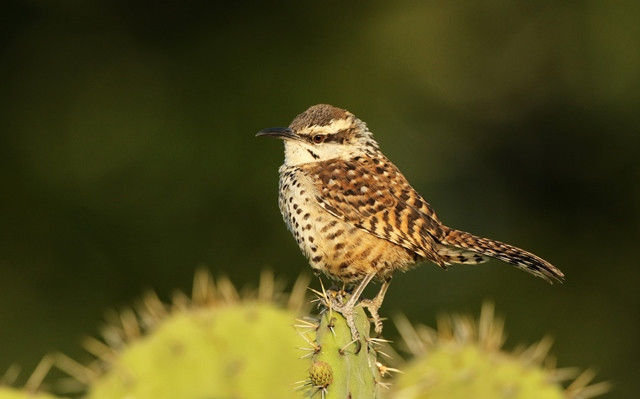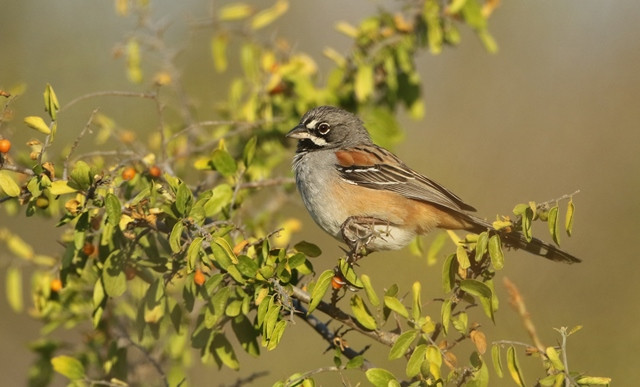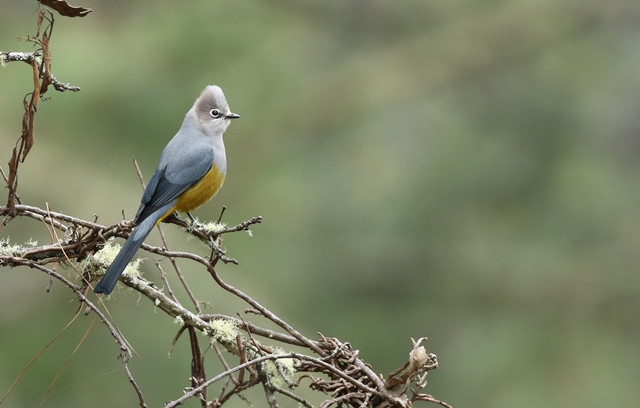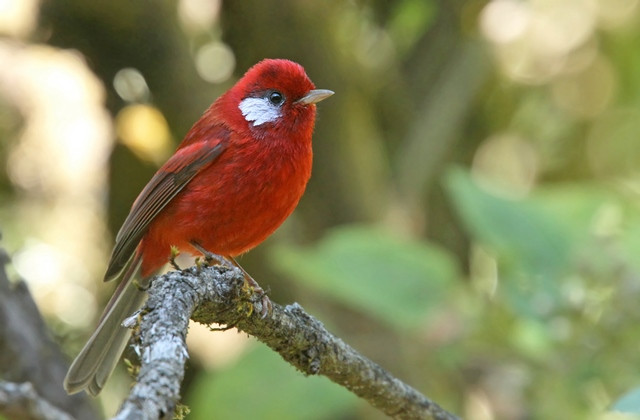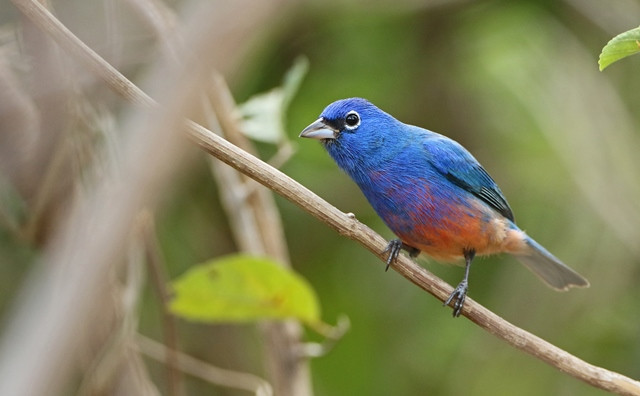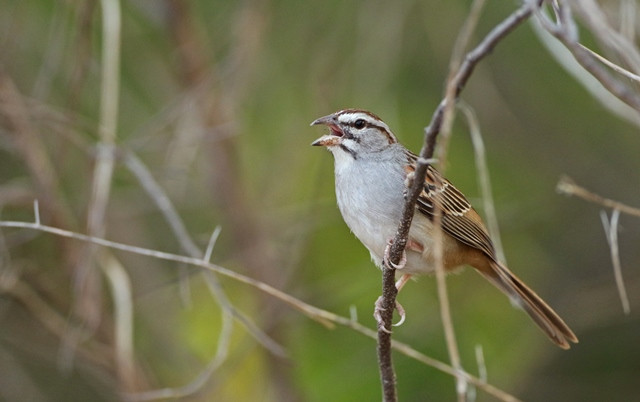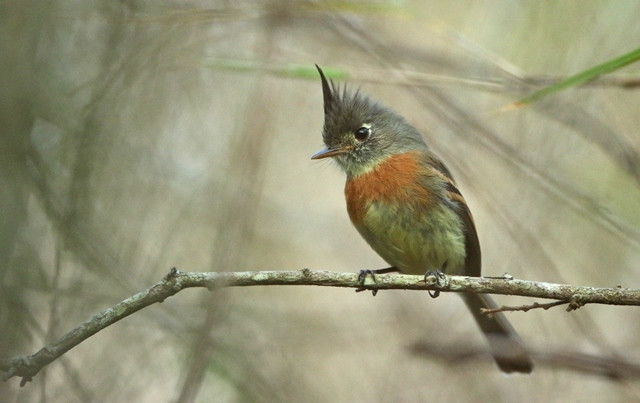 The sneaky Belted Flycatcher is one of our main targets in the bamboo-choked forests at El Sumidero. Photo: Luke Seitz
The sneaky Belted Flycatcher is one of our main targets in the bamboo-choked forests at El Sumidero. Photo: Luke Seitz This exciting tour focuses on one of the richest areas of bird endemism in Mexico: the Isthmus of Tehuantepec. Beyond the endemics, the region’s unique blend of species reflects its location at the point where the Nearctic faunal realm meets the Neotropics. South of the isthmus, for example, there are no more chickadees or nuthatches, two bird families very much part of the temperate northern avifauna, but diversity shoots up in terms of antbirds and tyrant flycatchers, two families centered in the Neotropics.
We’ll start in Tuxtla Gutiérrez, a modern city and the state capital of Chiapas, which lies within driving distance of habitats ranging from arid scrub to rain forest and humid pine-oak highlands. We’ll head next to Arriaga, on the Pacific side of the isthmus, and then move west and north to end in Oaxaca City, a time-honored favorite of birders and travelers. Within a short distance of Oaxaca City, we’ll explore habitats ranging from cool montane forest to arid scrub, and we’ll experience some of the cultural diversity for which Oaxaca is famous. Birds along the route run the gamut from the elusive Lesser Ground-Cuckoo and Giant Wren (as big as a Dwarf Jay!) to the electrically colored Rosita’s Bunting and the little-known Nava’s Wren.
Day 1: The trip begins at 6 p.m. this evening in the lobby of our Tuxtla Gutiérrez hotel. Night in Tuxtla Gutiérrez.
This as an excellent tour even though we had to fly home three days early to ensure we could get back into the United States due to the coronavirus travel shutdown. I was very pleased to see my main hoped-for birds: Pink-headed Warbler, Nava’s Wren, Belted Flycatcher, and Rosita’s Bunting, plus the wonderful bonus bird Bearded Screech-Owl. Luke did an excellent job guiding us, pointing out birds, answering questions, keeping everything organized, and helping everyone out in general with their needs. His knowledge of the birds and of southern Mexico was impressive.
Alan Wight, Apr 2020
Days 2-4: Just north of Tuxtla is the dramatic Sumidero Canyon National Park, where the Grijalva River cuts its exit from the central valley of Chiapas to drain eventually into the Gulf of Mexico. We’ll devote most of two days to this superb area, whose birds include Lesser Roadrunner, a variety of hummingbirds, Ash-throated, Nutting’s, Brown-crested, and Belted Flycatchers, Blue-and-white Mockingbird, Red-breasted Chat, Yellow Grosbeak, the rare bamboo specialist Blue Seedeater, and the poorly known Bar-winged Oriole. We’ll also explore other areas in the vicinity of Tuxtla, among them Atlantic slope rainforests, where we may find the very local and increasingly difficult Nava’s Wren, and highland pine-oak forests, home to birds like Unicolored Jay, Golden-browed Warbler, and Garnet-throated Hummingbird. We might even try to find the handsome Pink-headed Warbler, if we’re very lucky. We’ll also visit the world-famous Tuxtla Gutiérrez zoo, where many of the birds and mammals roam freely in native forest: Great Curassows wander the trails and spider monkeys swing overhead. Nights in Tuxtla Gutiérrez.
Day 5: This morning we’ll head inland to Arriaga, on the Pacific slope of the Isthmus, starting in some Atlantic Slope rainforest before winding down through foothills that are home to one of Mexico’s most localized endemics: Rosita’s Bunting, named in honor of the wife of François Sumichrast. Having seen this bird, one may conclude that if Rosita was as beautiful as her namesake, then Sumichrast was indeed a lucky man! Other birds in the area include Canivet’s Emerald, Orange-breasted Bunting, and Stripe-headed Sparrow. Night in Arriaga.
Day 6: Today we’ll explore the nearby coastal lowlands, where birds include a good variety of wintering migrants as well as a suite of resident species such as the amazing Giant Wren, bounding flocks of Orange-chinned Parakeets, and handsome Spot-breasted Orioles. Numbers of waterbirds vary from year to year, but we expect to see a good variety of herons, Magnificent Frigatebirds, and a few shorebirds and terns. Night in Arriaga.
Day 7: This morning we’ll bird near Arriaga or Puerto Arista again, depending on what species we’ve already seen, before heading to Tehuantepec after lunch. In late afternoon we’ll look for Sumichrast’s (or Cinnamon-tailed) Sparrow, a very local endemic named in honor of the pioneering French naturalist who resided on the isthmus for many years in the late 1800s. Other birds in this area include the secretive Lesser Ground-Cuckoo and the spectacular White-throated Magpie-Jay. We may also try some owling at dusk. Night in Tehuantepec.
Day 8: Today is a travel day as we make the spectacular drive through diverse cactus desert from the heat of Tehuantepec up to the temperate Oaxaca Valley. Birds change accordingly, from Ferruginous Pygmy-Owl and Rufous-naped Wren to Gray-breasted Woodpecker and White-throated Towhee. Often this is a good drive for hummingbirds, and we’ll look especially for the endemic Turquoise-crowned (Doubleday’s) Hummingbird. Night in Oaxaca.
Days 9-11: We’ll spend three days visiting habitats within an easy drive of our hotel, building an idea of the avifauna in a diversity of habitats at the southern end of the Nearctic region and finding a variety of little-known endemics. Birds around Oaxaca include Beautiful Hummingbird, Pileated Flycatcher, Mexican Chickadee, Dwarf Jay, Brown-backed Solitaire, Slaty and Dwarf Vireos, Red Warbler, and, of course, the very local Oaxaca Sparrow. Nights in Oaxaca City.
Day 12: The trip concludes this morning in Oaxaca City.
Updated: 19 April 2024
Prices
- 2026 Tour Price Not Yet Available
- (2024 Tour Price $4,090)
Notes

Questions? Tour Manager: Erin Olmstead. Call 1-866-547-9868 (US or Canada) or (01) 520-320-9868 or click here to email.
* Tour invoices paid by check carry a 4% discount. Details here.
This tour is limited to 7 participants with one leader; 10 participants with two leaders.

